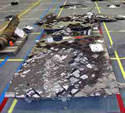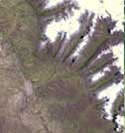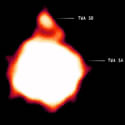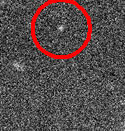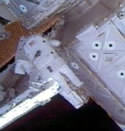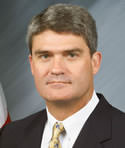
Image credit: NASA
NASA announced on Friday that William Parsons will become the new manager for the space shuttle program, replacing Ronald Dittemore who resigned on April 23. Previous to this position, Parsons was the director for NASA?s John C. Stennis Space Center in Mississippi. Dittemore had made plans to leave the position long before the Columbia disaster, but decided to stay on longer to help coordinate the investigation.
NASA today announced the selection of William (Bill) W. Parsons as the new manager for the Space Shuttle Program. Parsons, the director of the NASA John C. Stennis Space Center (SSC) in south Mississippi, succeeds Ronald D. Dittemore, who announced his resignation April 23.
“Bill is a talented leader, motivator, and he’s deeply devoted to the success of the Space Shuttle program,” said William F. Readdy, Associate Administrator of Space Flight at NASA Headquarters in Washington. “His management, technical experience, and dedication to safety are vital as we move forward and prepare to start flying again.”
Parsons has served as Center Director since August 2002. He was first assigned to SSC in 1997 as the Chief of Operations of the Propulsion Test Directorate. Parsons relocated to NASA Johnson Space Center (JSC) in Houston to become the Director of the Center Operations Directorate, and he later served as the Deputy Director of JSC. He returned to SSC in 2001, and he served as Director of the Center Operations and Support Directorate.
“I welcome the opportunity to work with Bill. He knows the space flight family and he knows the Space Shuttle program,” said Michael C. Kostelnik, Deputy Administrator for the International Space Station and Space Shuttle programs at Headquarters in Washington. “NASA is about the people who fly, fix, maintain and design our vehicles, and I know we’ve found a terrific leader to help guide the team through this difficult time.”
“This is a critical position for the agency as we begin to focus our Return to Flight efforts in the wake of the Columbia tragedy,” said NASA Administrator Sean O’Keefe. “The Space Shuttle Program, the entire space flight community, and the nation will be served by Bill’s great leadership. He will be missed by our colleagues at Stennis, but the benefits to all the NASA family will be tremendous.” Parsons began his career in the United States Marine Corps as an Infantry Officer, then worked as a manufacturing engineer and later as an aerospace engineer at Cape Canaveral Air Force Station in Florida.
In 1990, Parsons joined the NASA team at Kennedy Space Center (KSC) as a Launch Site Support Manager in the Shuttle Operations Directorate, worked as an Executive Management Intern, and later as the Shuttle Flow Director of the Shuttle Operations Directorate at KSC. In 1996, he became Manager of the Space Station Hardware Integration Office at KSC.
“From the first time I saw a Space Shuttle launch, I knew I wanted to be a part of NASA and America’s space exploration efforts,” said Parsons. “This is a challenging time for the program, but the people of NASA have a long, successful history of overcoming adversity. I’m proud to be a part of the Return to Flight effort and look forward to getting the Space Shuttle safely flying again.”
Parsons has received numerous honors, including NASA’s Exceptional Service Medal; the National Intelligence Medal of Achievement; the Silver Snoopy, awarded by astronauts for outstanding performance in flight safety and mission success; the Center Directors’ Commendation; and the Commandants Certificate of Commendation from the United States Marine Corps.
He graduated from the University of Mississippi with a Bachelor of Engineering degree. He also holds a Master of Science degree in Engineering Management from the University of Central Florida.
Stennis Deputy Director Michael Rudolphi will serve as interim director until a permanent successor is named.
Original Source: NASA News Release

